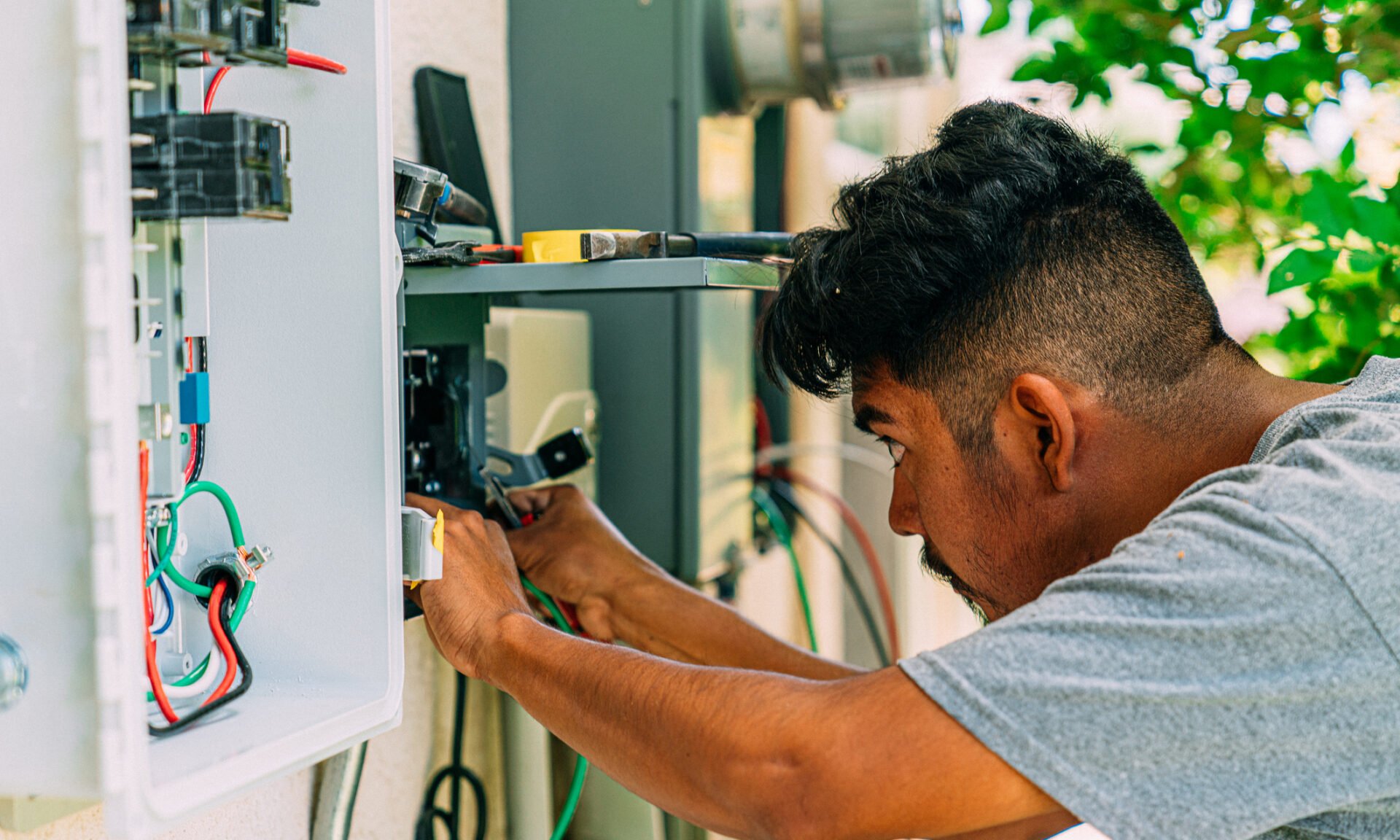Cost to Replace the Electrical Panel for Your Home
The cost to replace your electrical panel includes the panel itself, plus the labor required for installation.

Some or all of the mortgage lenders featured on our site are advertising partners of NerdWallet, but this does not influence our evaluations, lender star ratings or the order in which lenders are listed on the page. Our opinions are our own. Here is a list of our partners.
If your electrical panel is having recurring issues or can no longer handle the amount of electricity your home needs, it may be time for a replacement.
The cost to replace an electrical panel for your home is $1,313 on average, but can be as low as $200 or as high as $4,400, depending on the location, amperage (electrical current strength) and type of breaker.
What makes up the electrical panel replacement cost?
Costs include the price of materials, wiring and the electrician’s labor required for installation. Proper installation from a qualified electrician is essential to ensure a safe replacement process and the performance of your electrical system.
Expect to pay several hundred dollars for the panel and at least $1,000 for labor. Your installation may be more pricey if you need to upgrade the amperage, add a meter box or move the panel, especially if it requires rewiring.
» MORE: How to pay for home improvements
How much does a new electrical panel cost?
A replacement electrical panel can cost as little as $100 or $200 for a low-amperage panel without installation, but could cost close to $10,000 for a high-amperage panel with extensive rewiring. Here are some factors to consider:
- The higher the amperage, the higher the cost. Common home amperages range from 100 to 400 amps and cost from $100 to $500 for just the breaker box. Most homes need amperages between 100 and 200, according to home services aggregate Angi.
- The majority of the cost will likely come from labor. Electrical wiring requires professional skills and certifications, and professional electricians typically charge $50 to $150 per hour. An electrical panel replacement usually takes four to eight hours for one electrician to complete, and 20 or more hours to change connected wiring, resulting in a labor cost of at least $1,000.
- It costs more to install a new system than to upgrade an existing panel. In fact, it’s likely worth upgrading an existing panel to a larger version rather than replacing it with the same size because of the high labor cost in either case. Most electrical panel replacements upgrade a 100 or 150-amp panel to a 200-amp panel.
Electrical panel cost by component
Depending on your home’s electrical needs, you may only need to replace a specific part of the panel system. Electrical panels are made up of several components, some of which can be combined for different purposes.
Here are common electrical components and how much they cost to replace:
- Main breaker: $500–$2,000. This is the central power switch for your home. It’s relatively low cost on its own, but installation can be pricey.
- Circuit breaker switch or fuse: $100–$200. These are small switches in electrical panels that interrupt electrical current for safety reasons, such as during a power surge.
- Fuse box: $1,500–$2,000. These are single-use devices that contain a wire that melts when overloaded, and they’re typically found in older homes. It’s common to replace a fuse box with a circuit breaker when upgrading your electrical panel.
- Subpanel: $400–$2,000. This device can extend power to different areas of your home, and can be used to add more circuits without replacing your main panel.
- Electric meter box: $100-$650. This device measures energy usage in your home and is typically replaced by the utility or electrical company, though an electrician will need to connect it to the main panel.
When to replace an electrical panel
Electrical panels typically last from around 25 to 40 years, depending on the quality and use. If your system is over 25 years old or you’re having some of the following issues, it may be time to replace it:
- Flickering lights.
- Increasing energy costs.
- Outlets or lights cause electric shock.
- Frequent power surges or needing to reset tripped breakers.
- Panel is making noise, emitting heat or producing smoke.
- There’s not enough power for all of your appliances.
Some of these issues may be fixable with a repair, but if the repair is estimated to cost over $1,000, it’s likely worth it to get some quotes for replacing the panel.
Can I get financing for a home repair or improvement?
Your contractor may offer some financing options (either through a partner or a payment plan), but there are other — and maybe better — financing options available.
Home equity loan or HELOC
Home equity loans or home equity lines of credit (HELOC) may have lower interest rates than financing with an installer, as well as future opportunities for refinancing and possible tax benefits.
With a home equity loan, you receive a lump-sum payment and then pay it back at a fixed interest rate over an agreed period of time, typically five to 30 years. HELOCs are more akin to a credit card, something you use as needed. You’ll usually have 10 years to draw from the line of credit, during which time you only have to pay interest, and after that you pay both the principal and interest. HELOC interest rates typically are variable, meaning your monthly payment could rise or fall over time. And with each of these options, you're using your home as collateral.
Personal loan
Many banks, credit unions and online lenders offer personal loans, with amounts typically from $1,000 to $100,000 and with fixed annual percentage rates. You receive a lump sum and repay it in equal monthly installments over a set period, typically two to seven years. Unlike with home equity financing, there is no collateral. This means your home isn’t at risk if you miss payments, but you’ll still have to pay late fees and the late payments can negatively impact your credit.
Credit card
Credit cards are an option for lower cost repairs or renovations. That’s because credit cards typically charge higher interest rates than home equity loans, HELOCs and personal loans. When used responsibly, credit cards can come with great benefits, such as 0% introductory APR periods that allow you to avoid interest for a set number of months; rewards so you can earn cash back, travel or points; and sign-up bonuses that can give you some extra cash back or rewards for a larger purchase. If you go this route, you’ll want to make sure you pick one of the best credit cards for home improvements.
Which financing option is best for me?
The best financing option for you will depend on how much money you need, when you need the money, what project you’re doing and how long you need to pay the money back. If it’s something that’ll add value to your home, a HELOC or home equity loan may be your best option because the value of your house could increase by more than the amount of the loan.
On the flip side, if it’s a less expensive repair, a credit card is probably your best option if you want to pay no interest or earn rewards. Personal loans can apply to both small and large repairs or renovations, and they may make sense if you don’t have much equity in your home.
Some home improvement contractors offer their own financing options. Before taking this option, shop around and see how their offer compares with other loans.
Regardless of what you choose, make sure you compare interest rates, terms and fees with any financing options you’re considering. This will ensure you get the best deal.
Advertisement
Min. credit score 600 | Min. credit score 600 |
Min. down payment N/A | Min. down payment N/A |
Article sources
NerdWallet writers are subject matter authorities who use primary,
trustworthy sources to inform their work, including peer-reviewed
studies, government websites, academic research and interviews with
industry experts. All content is fact-checked for accuracy, timeliness
and relevance. You can learn more about NerdWallet's high
standards for journalism by reading our
editorial guidelines.
More like this
Related articles












